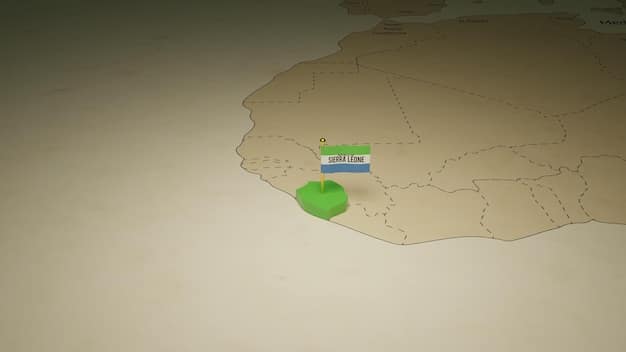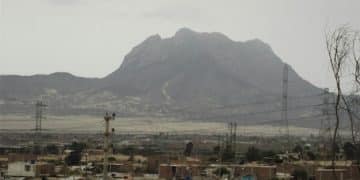Analyzing the US-Saudi Arabia Relationship: Recent Shifts & Future Direction

Analyzing the US relationship with Saudi Arabia reveals a complex dynamic influenced by oil, security, and human rights, undergoing shifts due to evolving US policies and Saudi Arabia’s changing regional role.
The relationship between the United States and Saudi Arabia has long been a cornerstone of Middle Eastern geopolitics, shaped by oil interests, security cooperation, and shared strategic objectives. Analyzing the US relationship with Saudi Arabia: Recent Shifts and Future Directions reveals a complex interplay of factors that have defined this partnership, but recent developments suggest a potential recalibration.
A historical overview of US-Saudi relations
The modern relationship between the United States and Saudi Arabia dates back to World War II, evolving over decades through distinct periods, each marked by specific geopolitical and economic imperatives. Understanding these historical phases is crucial for grasping the intricacies of their current dynamic.
The initial alignment and oil
The foundation of US-Saudi relations was laid in 1945 when President Franklin D. Roosevelt met with King Abdulaziz aboard the USS Quincy. This meeting established an informal agreement: the US would provide security guarantees to the Saudi royal family in exchange for access to Saudi oil reserves.
- Post-War Period: The US gained preferential access to Saudi Arabia’s vast oil reserves, vital for fueling the post-war economic boom.
- Security Alliance: The US committed to protecting Saudi Arabia’s territorial integrity, bolstering the monarchy’s stability.
- Economic Interdependence: This era cemented an enduring economic interdependence, with Saudi Arabia becoming a key oil exporter to the US.
Cold war cooperation
During the Cold War, shared concerns about Soviet influence in the Middle East deepened US-Saudi cooperation. Both nations viewed communism as a threat to their respective interests.
The US and Saudi Arabia collaborated to contain Soviet expansionism, particularly in regions like Yemen and Afghanistan. Saudi Arabia provided financial support to anti-communist forces.

Recent strains in the relationship
Despite the enduring nature of the US-Saudi partnership, recent years have witnessed growing strains, driven by differing perspectives on regional conflicts, human rights concerns, and evolving energy policies. These tensions have introduced a degree of uncertainty into the relationship.
The evolving global energy market, the shifting US foreign policy priorities under different administrations, and rising concerns about human rights within Saudi Arabia have contributed to a more complex and at times strained relationship.
Human rights controversies
The US has faced increasing pressure to address human rights abuses in Saudi Arabia, particularly following the murder of journalist Jamal Khashoggi in 2018.
The Biden administration has taken a tougher stance on human rights, publicly criticizing Saudi Arabia’s record and imposing sanctions on individuals involved in the Khashoggi killing. This has caused friction with the Saudi government, which views such criticism as interference in its internal affairs.
The impact of the Yemen war
The US has expressed growing concern over the humanitarian crisis in Yemen, where a Saudi-led military intervention has exacerbated the conflict. This has led to calls for the US to reduce its support for the Saudi-led coalition.
- Congressional pressure: Several members of Congress have pushed for legislation to restrict arms sales to Saudi Arabia.
- Humanitarian concerns: The US has provided humanitarian aid to Yemen, but critics argue that this is insufficient to address the scale of the crisis.
- Diplomatic efforts: The US has supported UN-led efforts to mediate a ceasefire and political settlement in Yemen.
These recent strains highlight the challenges of maintaining a close relationship with Saudi Arabia while upholding US values and interests.
Saudi Arabia’s evolving regional role
Saudi Arabia’s foreign policy has become more assertive in recent years, seeking to counter perceived threats from Iran and its proxies. This has led to Saudi involvement in regional conflicts and a more proactive approach to shaping regional dynamics.
Saudi Arabia’s growing assertiveness, driven by its perception of regional threats and its ambitions for regional leadership, presents both opportunities and challenges for the US. Understanding these dynamics is critical for navigating the complexities of the US-Saudi relationship.

Confrontation with Iran
Saudi Arabia views Iran as its primary regional rival, accusing it of supporting terrorist groups and interfering in the internal affairs of other Arab countries. This rivalry has fueled proxy conflicts in Yemen, Syria, and Lebanon.
The confrontation with Iran is a central component of Saudi Arabia’s foreign policy, shaping its alliances, military buildup, and diplomatic initiatives.
Diversification of relationships
Saudi Arabia has sought to diversify its foreign relations, strengthening ties with countries like Russia and China. This reflects a desire to reduce its dependence on the US and pursue its own strategic interests.
- Arms purchases: Saudi Arabia has explored purchasing weapons from Russia, signaling a potential shift away from traditional US suppliers.
- Economic partnerships: Saudi Arabia has deepened economic ties with China, including investments in infrastructure and energy projects.
- Diplomatic engagement: Saudi Arabia has engaged in diplomatic initiatives with Russia and China, seeking to coordinate policies on regional issues.
As Saudi Arabia seeks to navigate a complex regional landscape, its evolving relationships with other major powers will continue to shape the dynamics of the US-Saudi partnership.
The Biden administration’s approach
The Biden administration has adopted a more critical approach to Saudi Arabia than its predecessor, emphasizing human rights concerns and seeking to recalibrate the relationship. This has led to both challenges and opportunities for the US.
The Biden administration’s stance reflects a growing recognition of the need to balance strategic interests with values-based foreign policy considerations. This approach is likely to shape the future of the US-Saudi relationship.
Reassessing security commitments
The Biden administration has reassessed US security commitments to Saudi Arabia, ending support for offensive operations in Yemen and emphasizing diplomacy to resolve the conflict.
The administration has also sought to revive the Iran nuclear deal, a move opposed by Saudi Arabia, which fears that it would empower Iran and threaten regional stability.
Balancing interests and values
The Biden administration is attempting to strike a balance between maintaining a strategic partnership with Saudi Arabia and upholding US values, particularly on human rights.
- Conditional support: The administration has signaled that US support for Saudi Arabia will be conditional on progress on human rights and ending the war in Yemen.
- Diplomatic engagement: The administration has engaged in direct diplomacy with Saudi Arabia to address concerns and seek common ground.
- Multilateral approach: The administration is working with allies to address regional challenges and promote stability.
This approach acknowledges the complexities of the relationship while seeking to align US policy with its core values.
Future directions for US-Saudi relations
The future of US-Saudi relations is uncertain, with several possible scenarios emerging. The evolving geopolitical landscape, changing energy dynamics, and domestic political pressures in both countries will shape the trajectory of the relationship.
The choices made by leaders in Washington and Riyadh will determine whether the US-Saudi partnership continues to be a cornerstone of Middle Eastern security or undergoes a more fundamental transformation.
Potential for further divergence
The US and Saudi Arabia could continue to diverge on key issues, leading to a more transactional relationship based on narrow interests.
A breakdown in trust and cooperation could have significant consequences for regional stability and energy markets.
Opportunities for cooperation
Despite the challenges, there are also opportunities for the US and Saudi Arabia to cooperate on shared interests, such as counterterrorism, regional security, and economic development.
A renewed focus on diplomacy and mutual understanding could help to rebuild trust and strengthen the partnership.
The role of regional dynamics
The future of US-Saudi relations will also be shaped by regional dynamics, including the ongoing rivalry between Saudi Arabia and Iran, the conflict in Yemen, and the broader geopolitical landscape.
The US and Saudi Arabia will need to navigate these challenges together to promote stability and prevent further escalation.
| Key Point | Brief Description |
|---|---|
| 🤝 Historical Ties | US-Saudi relations started in 1945, focusing on oil and security. |
| ⚠️ Recent Strains | Human rights issues and the Yemen war have strained the relationship. |
| 🌍 Regional Role | Saudi Arabia’s assertive foreign policy and rivalry with Iran impact relations. |
| 🇺🇸 Biden’s Approach | Biden emphasizes human rights, reassessing security commitments. |
Frequently asked questions
▼
The primary factors were oil and security. The US sought access to Saudi Arabia’s oil reserves, while Saudi Arabia desired protection from regional threats.
▼
The Khashoggi murder significantly strained US-Saudi relations, leading to increased scrutiny of Saudi Arabia’s human rights record and calls for accountability.
▼
The US has expressed concern over the humanitarian crisis in Yemen and has ended support for offensive operations led by Saudi Arabia in the conflict.
▼
Saudi Arabia is diversifying its alliances by strengthening ties with countries like Russia and China, exploring new economic and military partnerships.
▼
Future scenarios include further divergence due to disagreements or renewed cooperation on shared interests like counterterrorism and regional stability.
Conclusion
Analyzing the US relationship with Saudi Arabia: Recent Shifts and Future Directions reveals a complex and evolving dynamic shaped by historical ties, strategic interests, and divergent values. As both nations navigate a changing geopolitical landscape, the future of their partnership will depend on their ability to address challenges, find common ground, and adapt to new realities.





